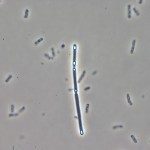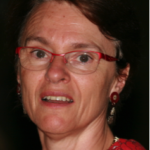Lien vers Pubmed [PMID] – 1924373
Proc. Natl. Acad. Sci. U.S.A. 1991 Oct;88(20):9092-6
The levanase operon in Bacillus subtilis is expressed from a -12, -24 promoter and transcription is stimulated by the regulator LevR, which contains a domain homologous with the central domain of the NifA and NtrC family of regulators. We isolated mutants defective in the expression of the levanase operon. These strains contain mutations that define a gene, called sigL, located between cysB and sacB on the genetic map. The sigL gene was cloned and sequenced. It encodes a polypeptide containing 436 residues with a molecular weight of 49,644. The amino acid sequence of SigL is homologous with all sigma 54 factors from Gram-negative bacteria, including Rhizobium meliloti (32% identity) and Klebsiella pneumoniae (30% identity). B. subtilis sigL mutants have a pleiotropic phenotype: (i) the transcription of the levanase operon is strongly reduced and (ii) in minimal medium lacking ammonia, sigL mutants cannot grow when arginine, ornithine, isoleucine, or valine is the sole nitrogen source. These results indicate that the sigL gene encodes an equivalent of the sigma 54 factor in B. subtilis, to our knowledge, the first of this type to be identified in Gram-positive bacteria.




